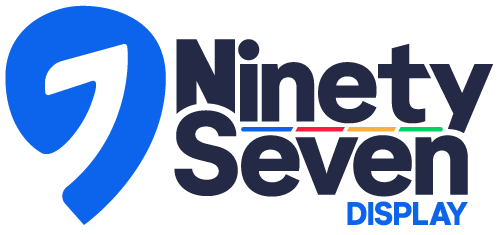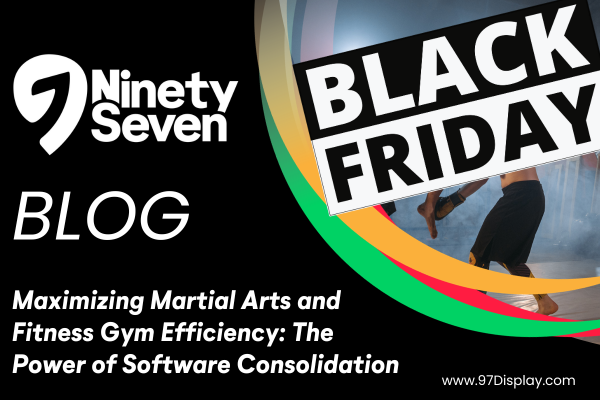
3 Problems Coaches Have When They Scale Past 20 Clients

There I was, lying flat on my back, staring at the ceiling, exhausted, ready to give it all up.
I had finally broken myself.
I had loved fitness from the day I could move and as soon as I got the taste of iron as a freshman in high school, I was hooked.
This was what I wanted to do.
I wanted to help people, A LOT of people.
And, judging by the state of the world, it needed my help.
Yet there I was, lying on my bedroom floor, resenting the very thing that I loved.
I had built my very own prison.
For the last 2 years, I spent every waking moment thinking about how I could help more people, how I could grow, and how I could scale.
Everyone wants to scale right?
Growth is in our DNA as entrepreneurs and business owners.
We want to forge our own path of limitless potential.
But, what happens when our massive professional success leaves us lying on the floor ready to give it all up?
That was me in 2015.
The magnitude of things to do broke me.
I started as a one man band training my parents and a few select others.
I took pride in exceptional customer service and doing everything I possibly could to help my clients.
I was texting them on non-training days, checking in on their habits I had given them during their last session. I was sending over education and funny cat pictures to brighten up their day. I was making sure they got results.
But, I wanted to make more money and impact more lives, so I took on more clients. I served them the same way I served my first clients.
I gave them everything.
This meant more hours, and if you are at all familiar with the trainer life, it meant early mornings and late evenings. You know, the peak training hours.
And the middle of the day, well that was filled with hustling to help more people.
Eventually I was coaching all day long and didn’t have time, or was too tired, to do the little things anymore. I was literally WITH clients all day long.
I literally had clients texting me on Friday nights as I was out to dinner with my girlfriend. I had trained my clients that I was available to them 24 hours a day, 7 days a week.
But that is good customer service right?
The best part was, if I didn’t respond immediately after I got the message, I would usually forget about it. Only to remember the second I saw that client for our session which immediately made me feel like a complete jackass for dropping the ball.
Things started to fall through the cracks. I didn’t have time, nor did I want to add even more hours to my day to text clients and hold them accountable outside of sessions.
I just wanted to get more sleep or have anything that closely resembled a social life.
I tried bringing on other coaches to help but they just couldn’t do it as well as I could. I was the only one that could do the job.
So, ultimately, I was the only one to do the job.
The thing I had jumped out of bed every day to build became a prison of my own making.
Luckily, I decided that I wasn’t going to go down that easy and decided to find some people smarter than me to help me craft my prison escape.
That plan allowed me to craft a business that I love with a team of coaches I am excited to work with every day and a life built on my terms – or right now, the terms of my 2 year old.
See, everyone loves to talk about growth, but they conveniently forget to talk about the problems that arise when rapid growth happens.
Today, I want to share with you the 3 biggest problems I experienced and see as coaches scale past just a handful of clients. And hopefully give you some ideas and tools so you can put the right pieces in place to prevent them from ever becoming a problem in the first place.
Problem #1: Lack of Accountability
The first thing to go is accountability outside of sessions.
See, those little touchpoints outside of sessions don’t directly lead to more money, coaching more sessions or maximizing the number of people in those sessions does.
So we drop the touchpoints to take care of more clients.
When we only have 5 or 10 clients, holding them accountable outside of sessions is easy. A text message here, an email there, a Facebook message when we are scrolling our life away.
We are able to know exactly how they are doing and intervene when we see issues come up.
But what happens when that number gets to 20 or 30 or 200? Keeping track of everyone outside of sessions, let alone just in session, becomes a major issue.
All those little touchpoints that created this exceptional experience when you were small are now gone.
Those touchpoints are what makes you different and are what makes your clients feel special. Unless you are okay with a revolving door of clients, finding ways to automate or at least batch these touchpoints is key.
My tool of choice: Coach Catalyst
Problem #2: No Systems
When you are a solo coach, just starting out, you don’t need any systems.
YOU are the system, so you just figure things out.
As you grow, the lack of systems becomes more and more apparent, especially as you bring on a staff.
When YOU are the system, you know exactly how to do everything, but it’s all in your head.
This is great until you…
- a) find yourself too busy working with clients and you don’t have much time for anything else
or
- b) you start to bring on new people to help you.
When you find yourself in Scenario A, you realize you only get paid when you are actually working with clients, so your inefficiency when you are not with clients is actually costing you loads of money.
When you find yourself in Scenario B, you bring on people to help but end up letting them go frustrated because they can’t do it as well as you and write them off as bad employees and go back to doing everything yourself. But when you sit back and reflect, they weren’t the problem; it was actually your lack of systems that didn’t give them the tools to be effective.
Creating a strong business is about replicating the experience. Yes, you are going to be the best at creating that experience, but that doesn’t mean it can’t be taught. And if you think it can’t be taught, then you need to be okay with simply creating a great thing for yourself.
But you also need to be okay with….
- – never getting paid while you are on vacation.
- – having to work more hours or raise your rates to make more money.
- – no sick days or leave without taking a paycut.
- – having a ceiling on earning potential.
The cool thing is in the technological age, it is easier than ever to scale a service-based business as we can offload many tasks to computers which frees up your time to focus on serving clients, making more money, and bringing on great people to impact more lives.
Start by recording everything you do.
Create a one page how-to sheet for everything you do.
- – How to open the gym.
- – How to check email.
- – How to market.
- – How to on-board a client.
- – How to deliver a session.
- – How to program for a client.
Sometimes systems will be really simple while others are a bit more complexed.
In the end, simple is better.
An easy way to do this is take video of the different things that you do then go back later and transcribe it onto a sheet of paper.
The reason I say one sheet of paper is to give you a constraint. If it can’t be stated on one sheet of paper, it’s too complex.
Again, simple is better.
Make a goal of doing 2 systems per week, store them in a Google document and you will have everything dialed in in no time.
Create a table of contents and then you will be able to share that with anyone and they will be able to replicate exactly what you do and improve on the system.
My tool of choice: Google Docs
Problem #3: Unorganized Communication
If you are like me, when you first started out, you just gave our your cell number to clients.
Just text me if you need anything.
Bad idea.
I wanted to provide great customer service, so I would text my clients and check-in. This lead to many Q&A sessions before dinner on Friday night or even Saturday afternoons between pick-up games of basketball.
I, unknowingly at the time, trained my clients that I was ALWAYS available to them.
But at that point, i didn’t care. I only had a handful of clients and wanted to provide the best possible experience for them.
Think about this for second.
Do you have your physical therapist or doctor’s personal cell phone number and have the liberty at contacting them at all hours of the day?
Most likely not.
Why should your number be any different?
You are just as much a professional as they are, right?
Because the coach-client relationship is so strong, the lines between personal and professional start to get blurred.
If you only have a few clients, take the number of messages you are getting now and 10x or even 20x that.
And, if you choose to not answer them when they come in, you have to remember to go back later and answer them. If you remember to go back, you have to sort through all your personal messages to find the business ones and it becomes a mess.
Without a solid system, customer service will start to fall off as more and more things will start falling through the cracks.
Then, what happens when you have a team?
Are coaches giving out their own personal number and now as a business you no longer have any control or oversight in the communication that is happening.
If you spend some time on the front end and use a free service like Google voice or a branded software like Coach Catalyst when you only have a few clients, you won’t have to re-train all your clients how to communicate with you.
My tools of choice: Google Voice & Coach Catalyst
Communication and accountability are two of the many reasons why Kane and I created Coach Catalyst. We realized in our coaching businesses that once we hit a certain point major problems started to arise.
We could no longer provide an exceptional experience like we could at the beginning because there was not enough time in the day.
At the end of the day, we just didn’t have the energy to do the little things anymore.
We wanted to be treated as equals amongst other professionals, but we weren’t acting like it. We realized we were empowering clients to take advantage of us which started us down the path of burnout and resentment towards our profession.
Too much success became our downfall.
We realized that we had a ceiling on the number of clients we could serve and we had no way of replicating the experience we provided intuitively with other coaches.
Hopefully, you can learn from our mistakes by creating a system that allows for continued accountability, documentation of everything that you do so you can hand it off if you want, and a system for professional communication.
This way you are replaceable, the ultimate goal of an entrepreneur.
_______
Author: Trevor Wittwer, Coach Catalyst
In order of least importance, Trevor is an ex-professional athlete, boutique fitness facility creator, software founder, coach, dad to 2, and husband to 1.
He got his feet wet in the fitness industry training himself for peak athletic performance. After a pro contract fell through, he started his professional fitness career. Over the the next four years he grew a client base from 0 (training his mom doesn’t count) to over 220 in a rural farming community of 5000 people.
Scaling a client base past just a handful of clients brings certain limitations to the surface. One of those is providing an exceptional experience and maintaining a high level of accountability for each individual.
After many conversations with his best friend Kane together they launched Coach Catalyst (formerly Habit Catalyst), an accountability and communication platform that empowers coaches to change more lives.
Since launching the software in 2016 he has been fortunate to bring two awesome boys, Asher and Ezra, into the world with his incredible wife Erin.
On an unrelated side note, he also a small obsession with Chipotle.


